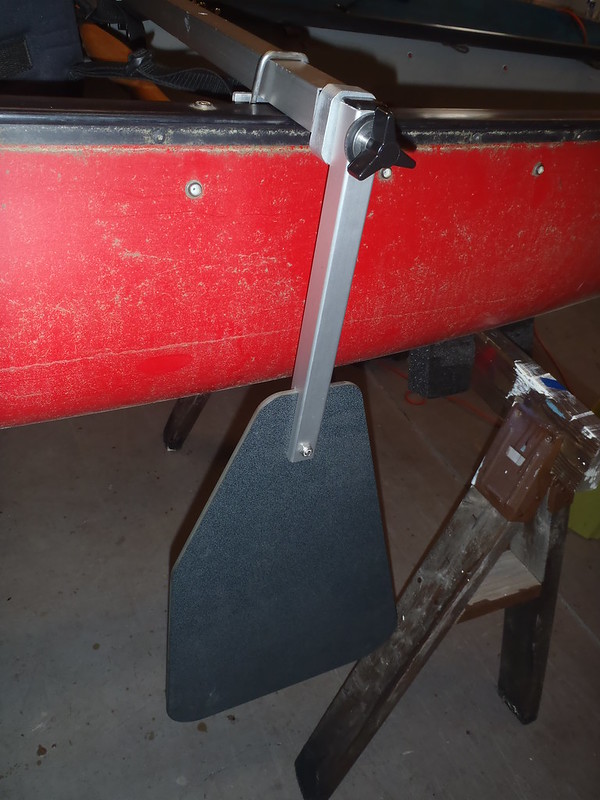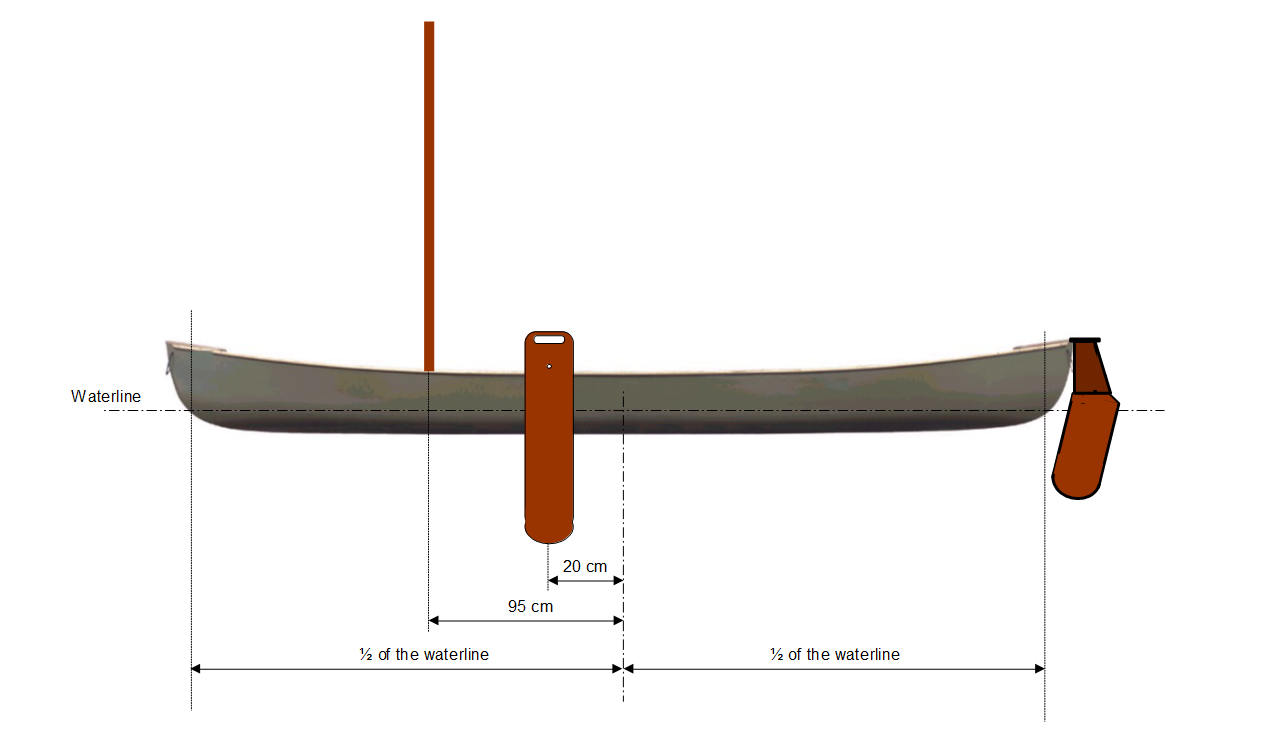G
Guest
Guest
I know little to nothing about leeboards. The closest I have come is downwind sailing while holding a semi vertical paddle blade rudder. That is quite unnecessarily tiring. My leeboard questions are novice elementary.
Where, fore and aft, on the hull is the lee board best located? I presume by necessity somewhere within reach of the stern seat or, if solo, the center seat, if only for manipulation access? What about in a tandem, close to the stern paddler, or as far forward amidships as still within reach?
How close to the hull? I need to drill new thumb button adjustment holes in a crossbar for the slide in receiver. Should the lee board be positioned as close to the hull as possible? Or a few inches out, provided it is still out of paddle stroke range?
 P1220435 by Mike McCrea, on Flickr
P1220435 by Mike McCrea, on Flickr
How deep into the water should the leeboard reach? Any of the leeboard above water is useless, and I expect deeper is better, within reason. Is extended below the hull beneficial, as with the propeller wash and water dynamics on a motor?
Lee board use is probably a tiny paddlesport niche within a niche. I Googled Everything you ever wanted to know about lee boards but were afraid to ask, and while it was a fun read, and I did learn some new positions, none of them had anything to do with where to locate a lee board.
Where, fore and aft, on the hull is the lee board best located? I presume by necessity somewhere within reach of the stern seat or, if solo, the center seat, if only for manipulation access? What about in a tandem, close to the stern paddler, or as far forward amidships as still within reach?
How close to the hull? I need to drill new thumb button adjustment holes in a crossbar for the slide in receiver. Should the lee board be positioned as close to the hull as possible? Or a few inches out, provided it is still out of paddle stroke range?
 P1220435 by Mike McCrea, on Flickr
P1220435 by Mike McCrea, on FlickrHow deep into the water should the leeboard reach? Any of the leeboard above water is useless, and I expect deeper is better, within reason. Is extended below the hull beneficial, as with the propeller wash and water dynamics on a motor?
Lee board use is probably a tiny paddlesport niche within a niche. I Googled Everything you ever wanted to know about lee boards but were afraid to ask, and while it was a fun read, and I did learn some new positions, none of them had anything to do with where to locate a lee board.

